Lark Hill Place, one of the galleries in Salford Museum and Art Gallery, is an atmospheric re-creation of a typical Northern street during Victorian times.
It is named after the mansion house built on the site. In 1845 the mansion was converted into a museum. It was a huge success. People flocked in; visitor numbers totalled to nearly 890,000 in 1857. Unfortunately, the original mansion was found unsafe in 1935 and was closed, demolished and replaced with the current building.
By 1945, the City Council began to rebuild Salford, bringing housing up to modern standards and replacing the terraced houses that had characterised the area from the 1870s. In 1955, the museum re-created a small street from salvaged features from houses and shops that would have otherwise been demolished. This resulted in Lark Hill Place, a street which re-captures past living conditions in Salford by displaying products and objects from daily life. The street is constructed with original shop fronts and objects.
The light levels are kept low topprotect objects from light damage - consequently, at Lark's Hill Place, it is always tea-time on a winter's evening, when the street gas lights have just been lit.
The cobbler
A 'blackamoor' figure on top of this building, which dates from around 1750. These were commonly used for tobacconists' shops. As the proportion of people unable to read was much higher during the 18th and 19th centuries than today, shops would often use figures and symbols in place of written signs. 'Blackmoor' figures were used to indicate the sale of Caribbean tocacco. Many carvers may have never seen a person who wasn't white before.
The gallery commented on the fact that regardless of the carver's intention, they consider it to be an offensive object and acknowledge its existence as a direct product of the transatlantic slave trade.
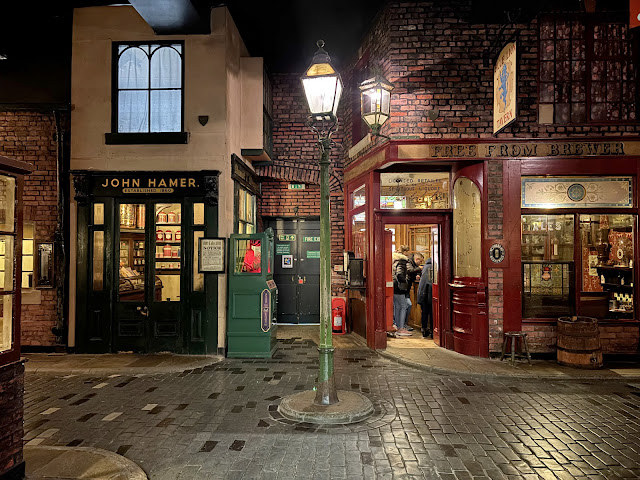



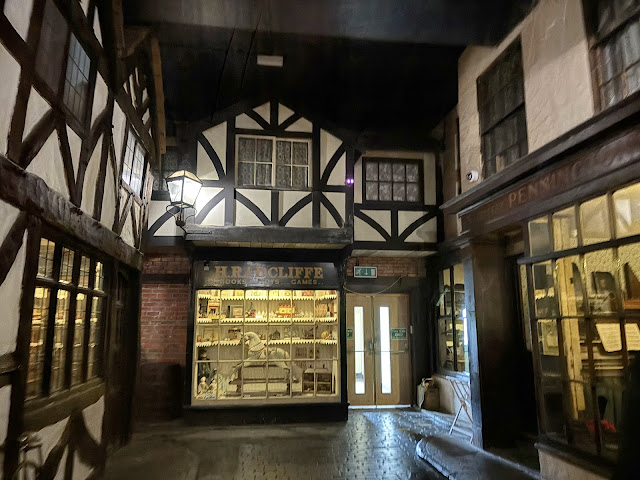


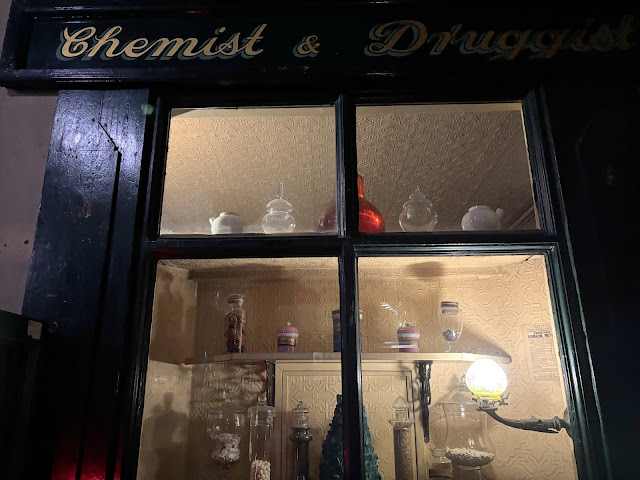

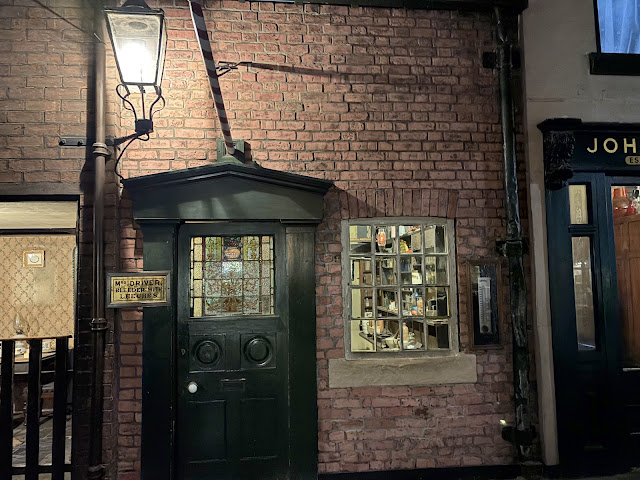
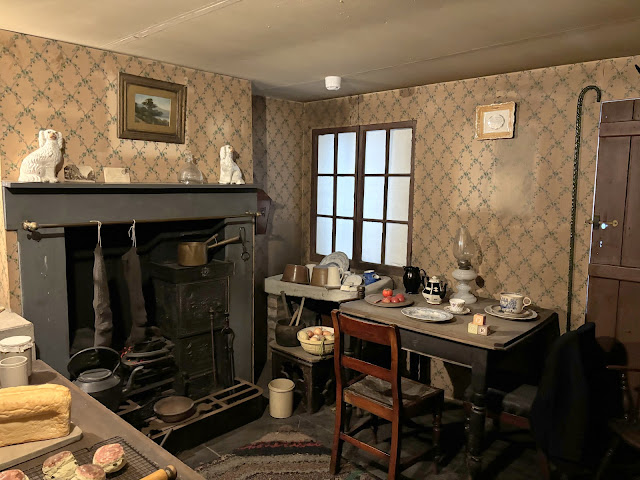









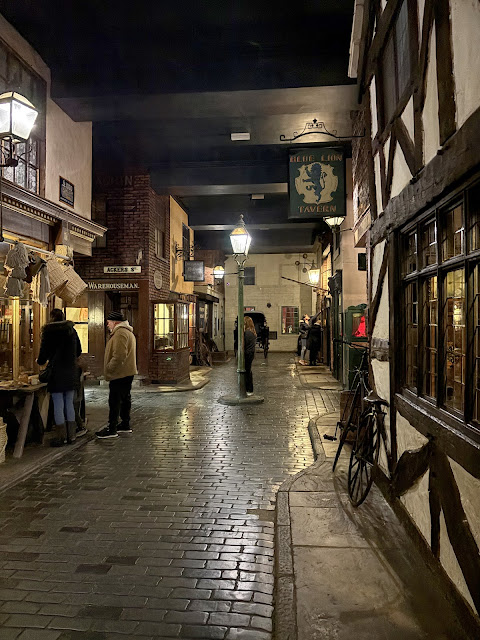
No comments:
Post a Comment